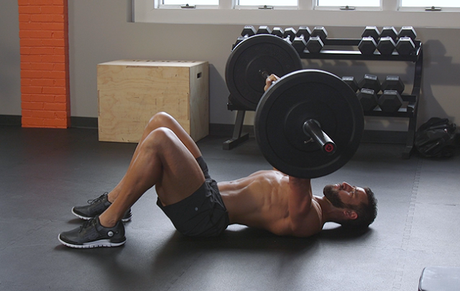The Best Chest Workouts - 3 Ways to Use Barbell Movements in Your Muscle-Building Chest Workouts
 When most people first get into weight training and bodybuilding, the first things on their mind are getting a huge chest and a strong bench press. Pressing strength and chest size have long been seen as hallmarks of a strong, muscular, and fit body. Though you may often read about the myriad of fancy chest workouts you can perform in the gym, the barbell basics are always going to give you your best results. Read on to find out how you can use these simple movements to build massive pecs in your own chest workouts.
When most people first get into weight training and bodybuilding, the first things on their mind are getting a huge chest and a strong bench press. Pressing strength and chest size have long been seen as hallmarks of a strong, muscular, and fit body. Though you may often read about the myriad of fancy chest workouts you can perform in the gym, the barbell basics are always going to give you your best results. Read on to find out how you can use these simple movements to build massive pecs in your own chest workouts.Bench Press
In the past few years, there has been an increasingly prominent trend for trainers, gurus, and other "experts" to tell weight lifters NOT to use the bench press as a primary muscle builder in their chest workouts. They say that it's more of a triceps and front delts movement, and that trying to use the flat bench to build your chest will surely lead to damaged shoulders and torn pecs. Frankly, you should completely disregard this advice. If you ask any top bodybuilder what exercises he used to build the majority of his chest mass, the bench press will almost certainly top the list. Likewise, if you take a look at any of the top bench pressers in the powerlifting world, they will have some of the largest chests you have ever seen.
The best way to perform the bench press, both for chest building and for shoulder safety, is to keep a moderate arch in your lower back, a tightly retracted scapula and upper back, and a solid, flat foot placement on the floor. Have a spotter hand off heavy weights to you, so you can save your rotator cuffs and your energy. Keeping a tight grip on the bar, bring it to your lower pecs or upper abdominal area and press back up and slightly back towards your face. Rather than flaring your arms out like you might often see, keep them in at about a 45 degree angle. Do not be afraid to use a little bit of leg drive to keep the weight moving; the emphasis of the movement will still be heavily on your chest.
If you are putting the bench press first in your chest workouts (and you should), work up to a heavy set to failure of about 4-6 reps. If you like, follow this with a "down" set of 8-10 reps with a little bit lighter weight. Make sure you strive to increase the weights for both of these sets every time you bench press.
Incline Bench Press
After the flat bench press, the incline bench is probably the best exercise for building mass in the chest. Whereas flat and decline movements often bring the shoulders and triceps heavily into play, most people find that this exercise places the majority of the stress directly on the pecs. The incline bench also heavily stimulates the upper chest, an often hard-to-target area that can give your upper body a very thick, dense look when developed properly.
The best way to perform the incline bench press is to set the bench at a moderate angle of about 30 degrees. Rather than trying to bring the bar to your lower chest or abdomen, you should lower it in a straight path towards your clavicle. If you are putting this exercise first in your chest workouts, you should follow the previous protocol of one set of 4-6 reps followed by one set of 8-10 reps. If this exercise comes later in the routine, work up to one or two sets of 8-10 reps to failure.
Floor Press
If you have read much about power lifting training, you may have come across descriptions of this movement. It is essentially a bench press performed lying on the floor. You lower the bar in roughly the same path as on a flat bench, stop and slightly pause when your triceps touch the floor, and press the weight back up to lockout. Though many people use this as more of a triceps exercise, you can take a moderately wide grip on the bar and stimulate your chest very well.
Some people find that they can handle more weight on the floor press than on the regular bench press. In many cases, this is due to a lack of proper technique on the actual bench, but the floor press does have the advantage of a decreased range of motion. Unless your arms are very short, you will reach the bottom of the movement when the bar is still several inches above your chest. For this reason, the floor press should be one of your go-to movements for stimulating your chest with extra weight. As far as sets and reps go, follow one of the two protocols previous outlined for chest workouts using the flat and incline bench press.
Source

